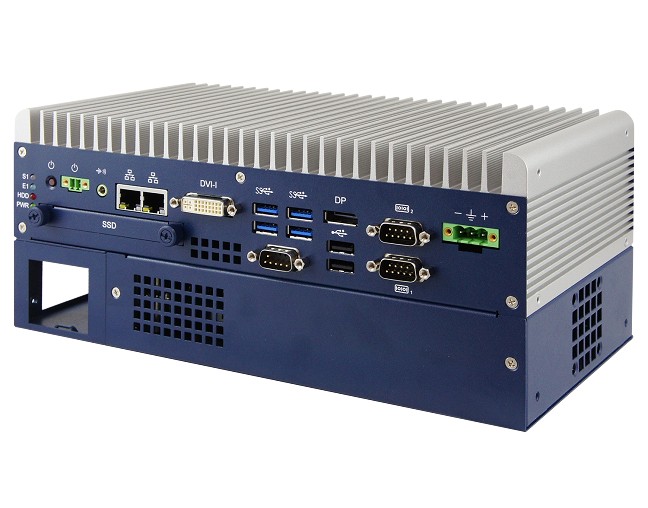
5 Things to Know Before Choosing a Rugged Computer
Posted on July 12, 2021
Rugged computers or ruggedized computers are the toughest, meanest machines out there. From hot and dusty streets to bumpy vehicles, these computers can work anywhere. And not at the cost of performance either; today’s rugged PCs come with features on par with other embedded systems.
There is a vast range of rugged computers available in the market these days, fulfilling every need and budget. But at the same time, this array of options can be confusing. What option should you go for? What must you consider before choosing a rugged computer?
To help put your doubts to rest, here are 5 things to keep in mind when shopping for a rugged computer:
#1: Where will the computer be deployed?
The first thing to consider is the location. Depending on where the computer will be used, your requirements are going to differ significantly.
For example, an industrial environment needs a rugged computer that can deal with high-intensity workloads. Temperature or dust is not that big a factor here, with impact resistance and overall durability being the key. You want a rugged computer with a hard casing and sturdy construction.
But for a computer meant to be used in an outdoor kiosk, the conditions are flipped. The workload isn’t likely to be that high, but dealing with hot and humid conditions is going to be difficult. For this, you need low-energy fanless systems.
#2: What application will it be used for?
The next consideration is the use case. This decides the technical specifications you will be needing, along with the connectivity options required.
If, say, your system is meant for industrial automation, then it needs the ability to interface with multiple technologies seamlessly. On the other hand, if the computer is to power the billing system at a restaurant, then an enclosed fanless system is a must.
The application you are getting the computer for also has bearing on how powerful you need it to be. Servers need all the processing power they can get, along with high memory. But a rugged computer operating a display board can get by with a simpler processor.
#3: Is there any external cooling?
Heat management is the most crucial aspect of keeping a system healthy. The computer can operate safely only in a limited temperature range, and upon exceeding it the system will start paring down its performance.
This aspect becomes even more important for rugged computers, as they are generally deployed in high-heat environments. An external cooling system isn’t always available, putting a greater strain on the computer.
For such scenarios, you need a rugged PC that’s capable of keeping its cool in the harshest environments. Fanless systems are best in this regard, as they limit internal heat generation.
#4: How much physical space is available?
When it comes to embedded computers, size matters. Rugged computers are installed in all sorts of locations, with very different working volumes. As such, not every computer in the market will be compatible with your needs.
In-vehicle systems, for example, have very strict size requirements. The system must go ‘under the hood’, fitting into the limited area. Similarly, embedded computers are often integrated into business counters, where they are supposed to slide neatly into the desk.
Industrial scenarios tend to be more permissive, as the control units tend to get their own dedicated units. Server racks, on the other hand, want the individual machines to be as small as possible.
#5: Would a GPU be required?
The inclusion of a discrete GPU involves significant space and energy requirements. It also produces more heat, which can be critical in a hot environment. This means that you must decide beforehand if your application needs a GPU.
The main uses of a GPU are AI algorithms and 3D image processing. Deep learning algorithms are being used for a wide variety of applications, from image recognition to chatbots. If you wish to tap into this potential, you need a dedicated GPU on your computer.
The second use is more uncommon in the commercial space. You need a GPU for visuals only if you want to output a 4K video to multiple terminals. Arcade machines are another application that needs a video card to function.
Conclusion
Rugged computers are versatile machines, suitable for a wide range of tasks. At the same time, specifications vary from model to model; deciding upon the right system can be tricky. But by keeping these five things in mind, you can ensure that you cover all the bases and find a machine that is just perfect for your needs.
